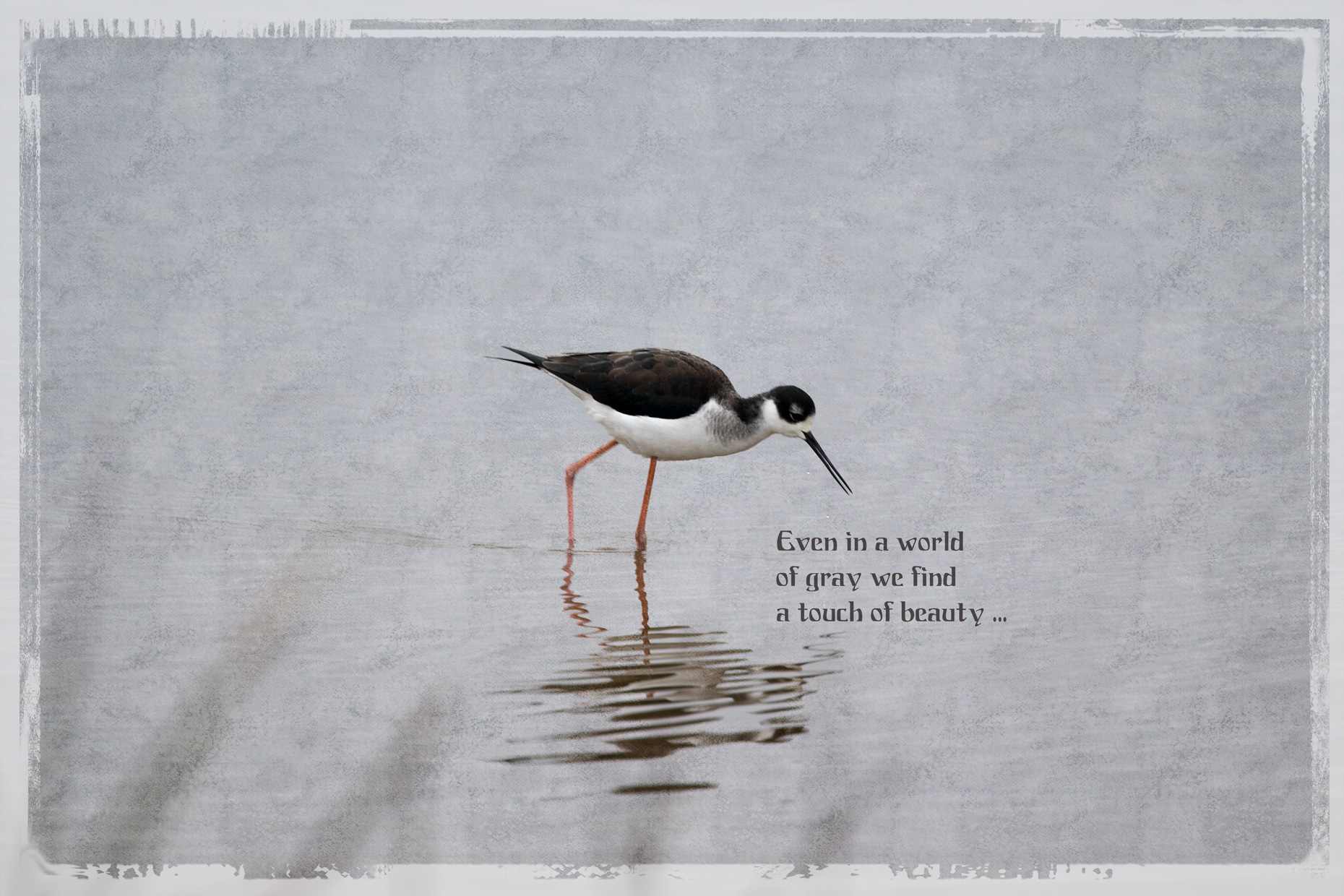
A Touch of Beauty


Out of photographs to post and amidst the wettest four-year period in Washington history, I decided it was time to retreat to drought-ridden California. Needless to say it was cloudy and rainy all the way to California. Hoping for better weather on our second day, we spent the night just outside the Sacramento National Wildlife Refuge. We even got to sleep in because it was so overcast that it was hard to tell the difference between night and morning, and it’s hard to get decent photos in the dark.
It was so dark and foggy I didn’t even bother to mount the 500mm lens with a doubler since it was impossible to focus on distant birds. This shot of a small flock of Greater White-Fronted Geese in the distance has actually been improved by adjusting levels in Lightroom,

but even Lightroom and Photoshop can’t totally compensate for a lack of light. Heck, if I hadn’t just driven 600+ miles for some sunshine, I might have been perfectly happy with the soft edges and muted colors. It was hard not to enjoy seeing flocks of these geese that I rarely see at home.
Luckily, the closer you get and the more you adjust in Lightroom and Photoshop, the better the shots look.

It looks as bright in these shots as it did in real-life, if not a little brighter.
Trying to focus on close-up objects because of fog or low-light conditions creates its own problems. You have a real narrow focus range; even though these geese were fairly close together only the two at the right were in sharp focus,

and there’s no way to correct that.
The biggest problem for me, though, is that you have to use a lower shutter speed under low-light conditions and that makes it impossible to freeze birds in flight. Even panning it’s impossible to avoid the blur in the wings,

which seems to be real no-no in wildlife photography — even if that is how the human eye perceives the wings in in flight. Personally, I waver between the two and often prefer the blur of wings, at least when I get to choose what I want it to look like.
I was happy to see many birds I’d looked forward to seeing since our last visit, even if I wasn’t entirely happy with the weather conditions. There was no denying, though, that the area needed some rain because the refuge is dependent on rain to function.
I’m (always/generally/sometimes) (un)willing to sacrifice my personal comfort for the greater good.
I included this poem in my January 1, 2002 entry and I still haven’t found a better poem to start a new year.
Perhaps it’s a testament to the value of art that this poem written at the beginning of the 20th Century seems as valid today as it did the day it was written.
THE DARKLING THRUSH
I LEANT upon a coppice gate
When Frost was spectre-gray,
And Winter’s dregs made desolate
The weakening eye of day.
The tangled bine-stems scored the sky-
Like strings of broken lyres,
And all mankind that haunted nigh
Had sought their household fires.
The land’s sharp features seemed to be
The Century’s corpse outleapt,
His crypt the cloudy canopy,
The wind his death-lament.
The ancient pulse of germ and birth
Was shrunken hard and dry,
And every spirit upon earth
Seemed fervourless as I.
At once a voice arose among
The bleak twigs overhead
In a full-hearted evensong
Of joy illimited;
An aged thrush, frail, gaunt, and small,
In blast-beruffled plume,
Had chosen thus to fling his soul
Upon the growing gloom.
So little cause for carolings
Of such ecstatic sound
Was written on terrestrial things
Afar or nigh around,
That I could think there trembled through
His happy good-night air
Some blessed Hope, whereof he knew
And I was unaware.
December 1900
I was reminded of Hardy’s poem by the hoar frost on the barren vines that lined the trail at Theler Wetlands today. Didn’t see any thrushes, but Song Sparrows greeted us and Red-Wing Blackbirds were already staking out their claim to nesting grounds.